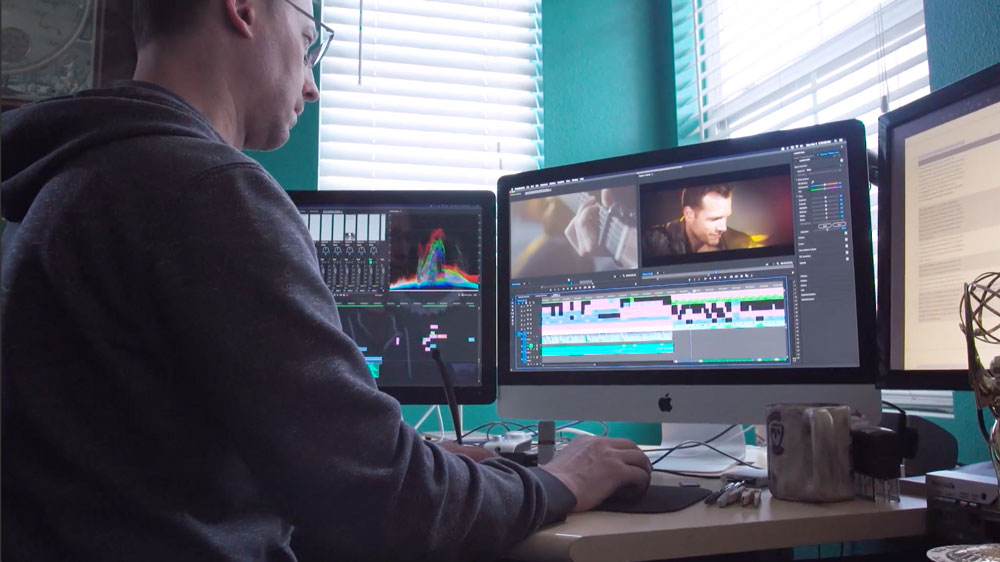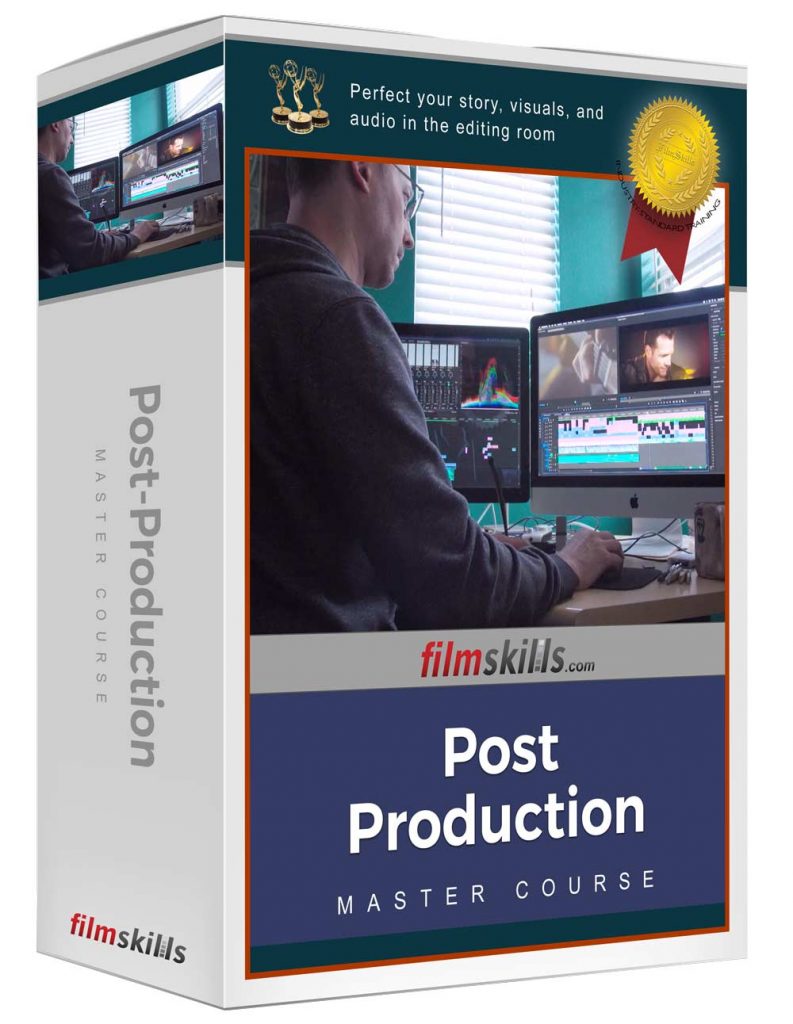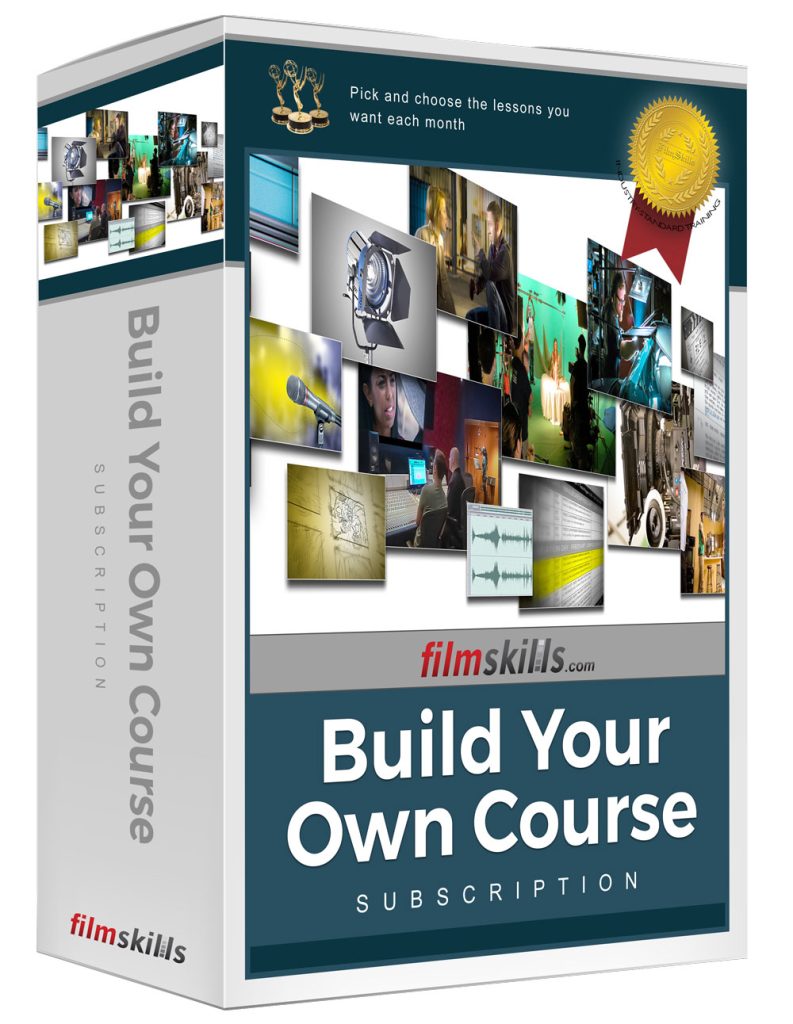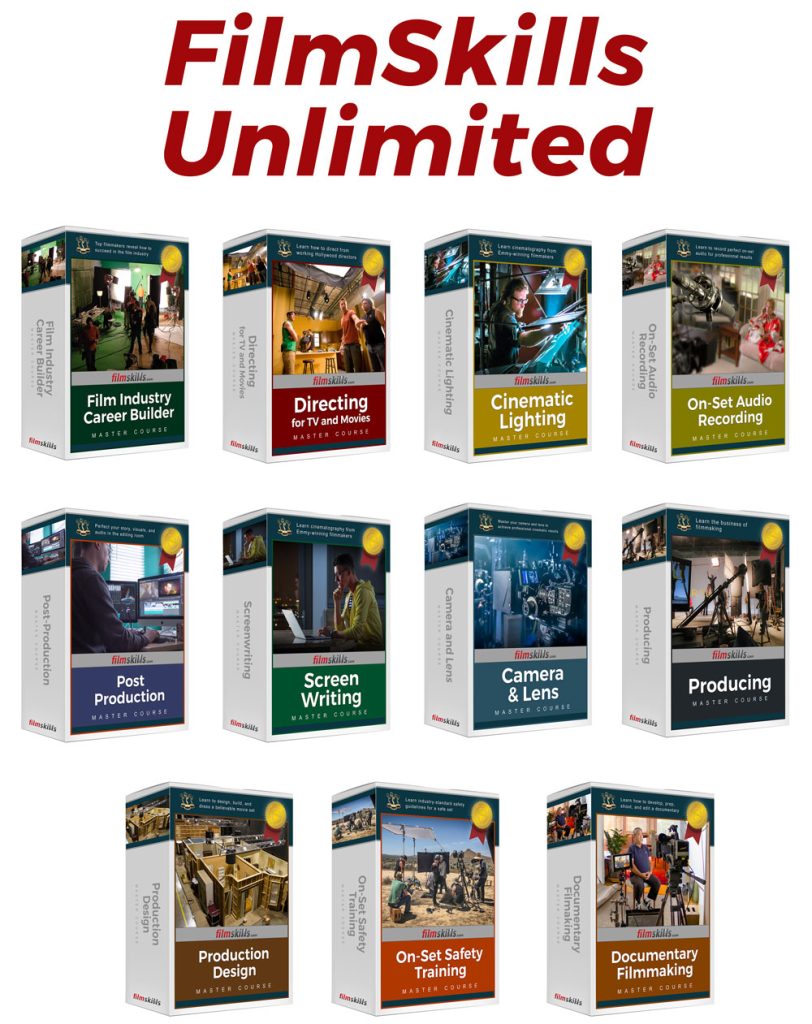The Complete Filmmaking Curriculum
Over a hundred Hollywood professionals helped build a comprehensive filmmaking curriculum.

Post Production
The editors, sound mixers, and composers guide you through the process of post production, including editing for story, mixing the audio, scoring the scene.
Section 1: The Art of Editing
Emmy-winning television and film editors take you inside the process and psychology of film editing. Learn how to properly shoot footage on set to maximize options in the editing room, when to cut from one shot to the next, how to choose your shot selection, how to work with the editor, and how to create the most emotion in each scene.
Hiring an Editor
In this lesson, you will learn how to find a qualified editor, how to assess an editor’s demo reel, tips for ensuring his vision and communication style match yours, and how to ultimately get the best person for the job. (11:22)
Working with an Editor
Learn techniques for communicating your vision to the editor, the editor’s workflow, and what you can do to get the best results possible in the editing room. (20:23)
Concepts of Editing
Learn when to cut, how to determine whether you should cut or not, the hierarchy of story-telling importance when editing, what to show or not show, and how to use psychology to craft a scene the invokes powerful emotions – all through how it is edited. (37:39)
Data Management and Workflow
Learn how to develop a system for organizing the footage from set to post, how to develop a workflow that keeps the process smooth and conflict-free, how to conduct post-production meetings, the role of the post-production supervisor, standard techniques for labeling and managing footage, and data handling techniques. (26:39(
The Assembly Cut
Learn how to approach the assembly cut, how to manage music and sound effects, what should or shouldn’t be included, and how to address issues of pacing, story, and character development. (21:33)
Stock Footage
Learn how to use stock footage, how to understand a licensing agreement, where to find stock footage, how to manage the technical requirements, and what your rights are when distributing your production. (20:58)
Editing a Dialogue Scene
Learn the correct and incorrect ways of shooting dialogue on set, advanced techniques for manipulating the pacing and emotional intensity of the scene, how to work with changing background ambience, techniques for balancing the visual performance with the dialogue, how to mix the audio, ultimately how to get the best performance through the edit. (34:27)
Editing Action
Learn how to edit action for proper flow, continuity, and pacing. Learn techniques for compressing time, revealing only the essentials to keep the story moving forward, and advanced editing techniques used by master editors. (21:51)
The Rough Cut
Learn how to approach the rough cut, determine what moments work, how to re-structure the story, and ultimately create a movie that stands on its own- divorced from the script. (19:04)
Test Screenings
Learn how to prepare for and conduct a test screening, how to choose the right test audience, what questions to ask after the test screening, and how to filter the responses into usable comments that can improve the story (21:34)
The Fine Cut
Learn techniques for perfecting every single frame of your movie before locking the picture edit, how you will know when the movie is done, the implications of locking the picture, and the process of prepping the film for audio. (14:44)
Online/Offline Editing
Learn how and when to work in an offline environment, how to transition to an online cut, and techniques for ensuring the process goes smoothly. (8:47)
Color Grading
Learn the color grading process, how it differs amongst formats, the balance between technical and artistic grading, how to protect yourself from the “fix-it-in-post” mentality, and how to get the look you want. (15:40)
Section 2: Audio Post-Production
In this first section, learn how to get started by prepping your writing space, and identify a marketable idea.
Intro to Audio Post-Production
Learn the five components of audio and go to the sound studio to experience the construction of the audio for a scene. Learn the ADR process, the contributions of Foley to the mix, the role of sound effects, and ambience, and the music. (26:06)
ADR
One of the most important elements of the audio track is the dialogue - not only from the creative sense, but technically. The dialogue editors work hard to make sure the audience can hear the everything the actors are saying and that it’s free and clean of any background noise or distracting sounds. While dialogue editors may try hard to remove the background noise, or even smooth it out, sometimes there is no other option than to re-record the dialogue. This process is called Automated Dialogue Replacement (ADR), and in this module you’re going to learn the process of properly using ADR to improve the quality of your dialogue track. (30:31)
Directing Actors in ADR
Learn how to work with actors to get the best vocal performance possible during the ADR process, address acting problems and actor fatigue, and gain valuable tips on how to direct a natural and realistic performance so the ADR performance becomes better than the original delivery on set. (28:19)
Foley
Learn how Foley is recorded and mixed to create a full, rich audio track. Learn the types of Foley, how much should be recorded, the process of recording Foley, and how to properly schedule and budget this creatively demanding aspect of audio post-production. (33:33)
Sound Effects
Learn the process of creating a compelling sound effects track for your movie, where to find high quality sound effects, how sounds effects and Foley work together, how to find a balance with the dialogue and music, and the role of the sound effects editor. (24:49)
Mixing the Audio
Throughout the audio post-production process, each department - dialogue, Foley, sound effects, and music generate tens of thousands of individual sounds across hundreds of tracks. All of these sounds need to be mixed together into a single soundtrack - whether it’s a stereo track for broadcast, a 5.1 mix, or a 10.1 theatrical mix. This process is called mixing the audio, and it happens on a dubbing stage. In this module, we’re going to explore the dubbing process and how all these audio elements get mixed together to create the sonic experience for the audience. (24:49)
Section 3: Music Composition
In this first section, learn how to get started by prepping your writing space, and identify a marketable idea.
The Emotion of Music
Music is as much of a performer in a scene as the actor or the camera. Its movements, tone, and intensity help shape the emotion of the moment. But, like any performance, the right performance can bring added life to the scene, but too much can overwhelm the moment, pulling the audience out of the story. In this module, you will learn how to balance music’s role in a movie against the other dramatic elements, tips and techniques for creating a compelling score that supports the emotion of the movie, and how to avoid overscoring. (28:25)
Working with a Composer
One of the most important collaborations on a movie happens between the director and the composer. The composer adds the final performance - the music - to the narrative tapestry, and understanding how that tapestry should be woven is why the director/composer relationship is so important. In this module, you’re going to experience the entire process of scoring a movie, from the initial meeting with the composer to the very end when you’re making the final tweaks to the music. Improve your communication with the composer, get the best score for your movie, and craft the best emotional ride for the audience. (47:33)
The Who and How of Music
Learn the people involved in crafting the score to a movie, the types of scores available, and how music is recorded - from synth to live instruments. (31:29)
Scoring the Scene
Award-winning composer, Chris First teaches you how to build a MIDI-based system by taking you on a tour through his own studio. He then walks you through his step-by-step approach to scoring a scene from the movie, “Clone.” Go inside the composer’s world and learn the process of how music is properly used to enrich a scene. Learn how to work with a composer and the composer’s process of writing original music for a movie. (18:23)
Music Licensing
Are you interested in using a popular song or existing soundtrack in your movie? Music - just like movies and books - is protected by copyright law, which restricts its usage to the owner of the copyright. In recent years, many record labels and studios have begun cracking down on illegal downloading and usage of their work, making the legal use of this music somewhat confusing for users. In this module we’re going to explore the legal way to license and use music for your movie. Protect yourself, respect the rights of the music artist, and learn how to properly license music for use in your production. (33:15)


